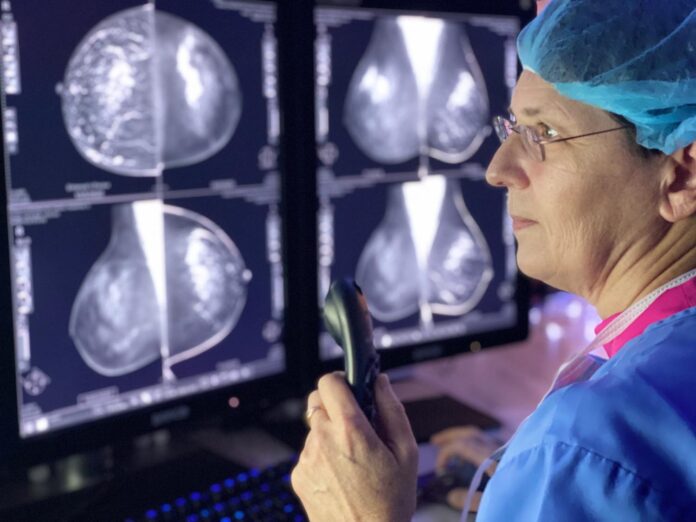October is Breast Cancer Awareness Month across the world. Detecting the cancer early improves the odds of survival and can ultimately prevent more extensive treatment, and prevention is key.
According to the Centers for Disease Control and Prevention, in 2017, 42,000 women died of the disease. That same year, 250,520 new cases were diagnosed.
In Brownsville, Valley Regional Medical Center remains the only hospital in the Rio Grande Valley to be recognized as a Breast Imaging Center of Excellence by the American College of Radiology, and physicians there are encouraging women to take the time to get screened.
Mammograms — an exam and X-ray that take no longer than 15 minutes — are the only test shown to reduce breast cancer deaths, according to the American College of Radiology.
Dr. Kimberly Addis, staff radiologist at VRMC and Medical Director at Rio Grande Hospital in McAllen, said women should begin getting screened at the age of 40. There is an exception if you have a family history of breast cancer, she said, for which physicians may recommend earlier screening.
VRMC offers high-risk screening for different cancers that include genetic testing for breast, ovarian, gastric, colorectal, pancreatic, and endometrial cancers, as well as melanoma. Due to COVID, the hospital has a strict screening procedure in place where staff asks for patients’ family history.
If a woman scores higher than a 20 percent, that information is entered into the system at VRMC and they’re offered a saliva test for genetic testing. That test is sent off for processing, then comes back determining whether there are mutated BRCA 1 and 2 genes, which significantly increase the risk of developing breast or ovarian cancer.
Mammograms, as well as procedures like stereotactic biopsies, breast ultrasounds, and breast MRIs are all used at VRMC to detect the presence of breast cancer in the body.
Addis recommends self-screening for lumps in the breasts. “We recommend that everyone does the monthly self-breast exam, as well as sees a physician annually to get a breast exam,” she said.
Patients should look for lumps, as well as changes in the skin like peeling, scaling, flaking, rash, dimpling or pitting, and even textural changes. “They should look for any nipple retraction or asymmetry,” said Addis.
“But the big thing is palpable lumps. If a patient comes in with palpable lumps, we need to target that. We can do the mammography and then we can do a targeted ultrasound for further evaluation.”
With COVID still in the community, it’s important to remember that patients who have breast cancer already — particularly those who are on chemotherapy and qualify as immunosuppressed — are at risk of complications from the virus.
“Patients who have underlying lung diseases, patients who have metastatic lesions to their lungs will also be at increased risk of developing complications just because they have underlying disease,” the radiologist added.
“We have a safe facility for everyone to come into. They should’t be afraid of coming for their mammogram. We have very strict guidelines and feel that we can provide them exceptional care,” Addis said.
VRMC is running a special right now for which women can get a mammogram and an interpretation of the mammogram for $75 and encourages patients interested in screening to call.
Anyone with questions or concerns about the disease is also invited to attend a FB Live event next Wednesday, during which a mammographer from VRMC will answer questions from community members.





